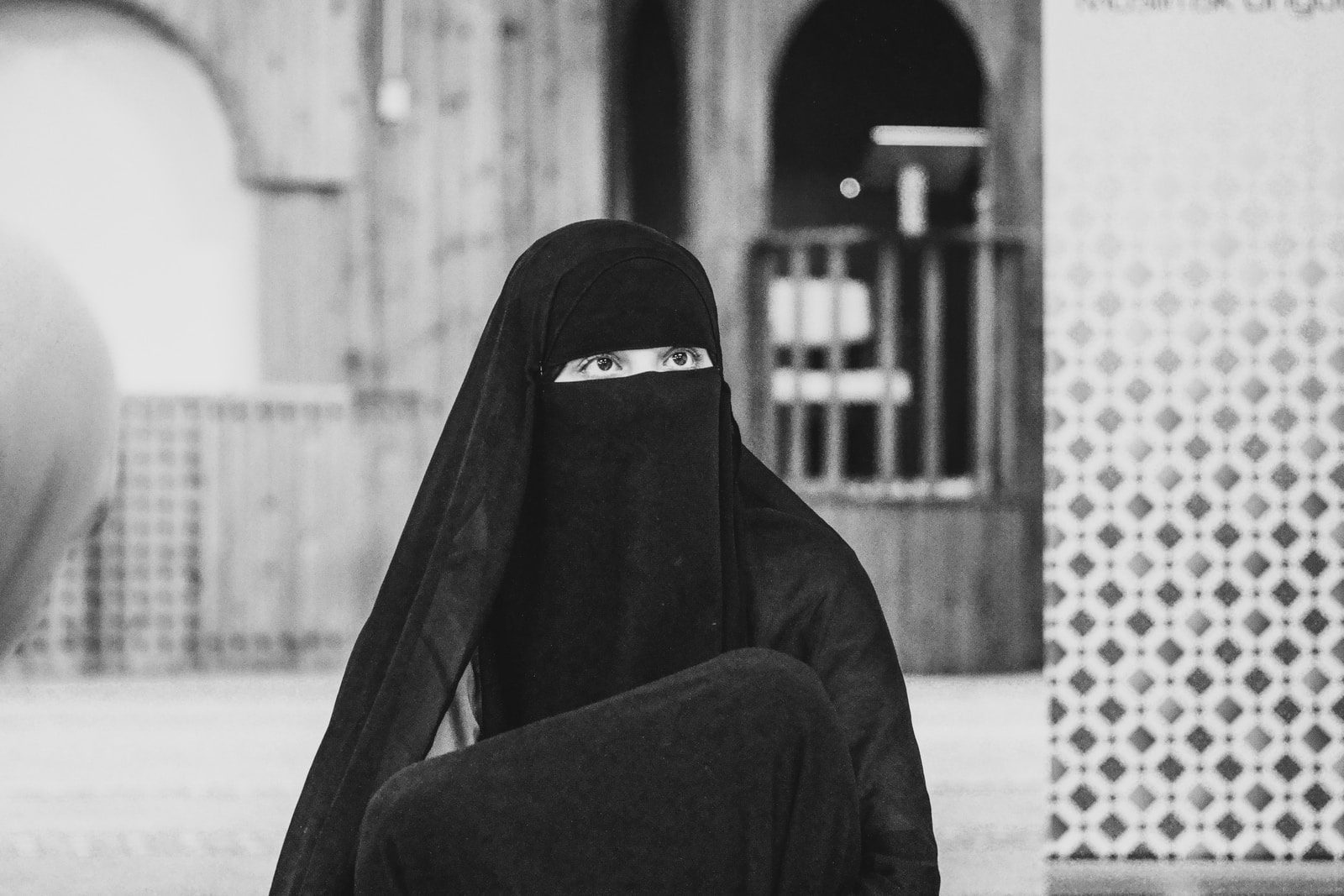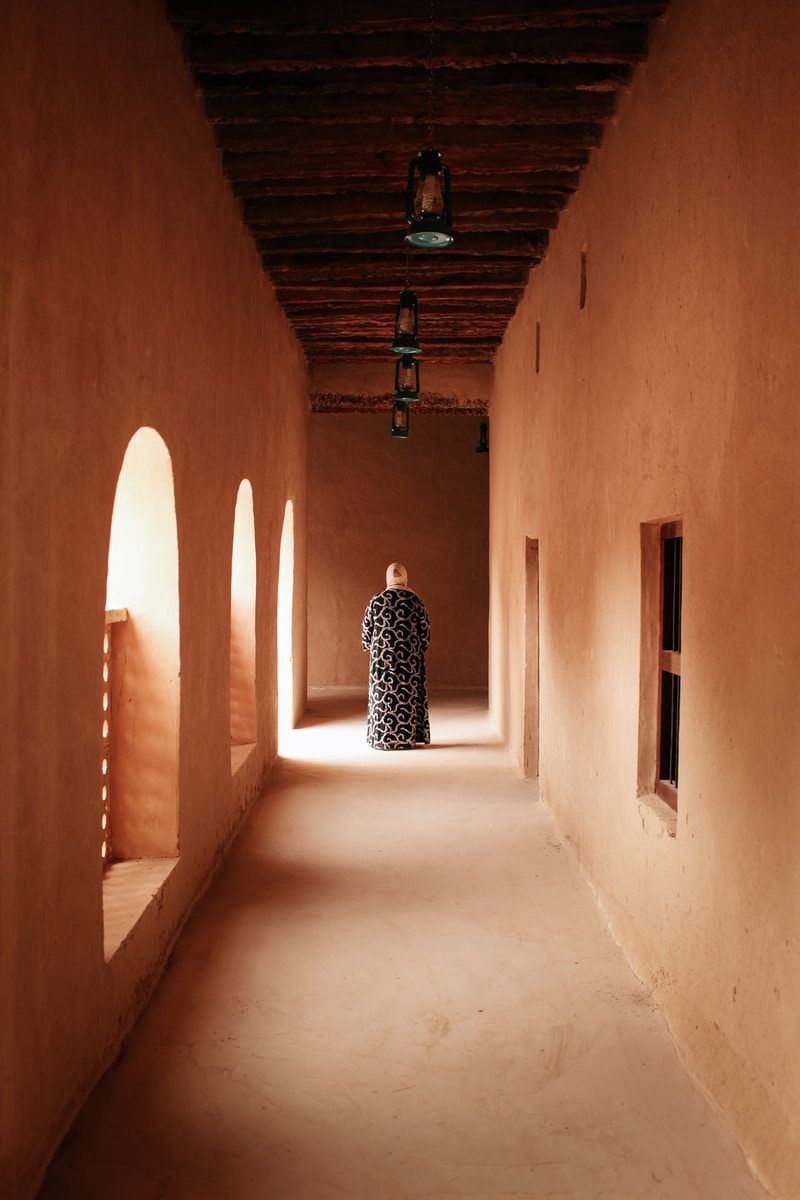Abayas
Abayas are the most common form of dress for women in Saudi Arabia, and they can be worn with or without headscarves. The Abaya has been around since at least the 16th century when it was first introduced by Ottoman Turks as part of their military uniform. It became popular among Muslim women during the 19th century due to its practicality and modesty. In modern times, however, some Westerners have criticized the traditional style of wearing the abaya because of what they perceive as an excessive covering of the body.
The word “abaya” comes from Arabic عبية, which means “cloak”. This name refers to the fact that this garment covers the entire upper half of the body except for the face and hands. The abaya consists of two parts: the outer layer and the inner lining. Both layers cover the whole body except for the face, neck, arms, legs, feet, and hands.
History of Abayas
In 1517, Sultan Selim I ordered his soldiers to wear black coats over white shirts and trousers. These were later adopted by other Muslims throughout Europe and Asia.
In 1837, the British army began using the same type of clothing for both men and women. They called these uniforms “Turkish” clothes. During World War II, many European countries used Turkish-style uniforms for their troops. After the war, these outfits continued to be widely used until the 1960s.
In the early 20th century, the abaya gained popularity among Arab women after King Abdulaziz Al Saud decreed that all female employees must wear them while working. He also required male servants to wear them while serving him.
Today, the abaya remains one of the most important symbols of Islamic identity in Saudi Arabia. Many Saudis consider themselves devout Muslims if they do not own any jewelry, perfume, makeup, nail polish, or lipstick. Women who work outside the home usually wear the abaya along with a hijab. Some women choose to wear only the abaya and no hijab.
There are three types of abayas:
1) Traditional: A loose-fitting robe made out of cotton fabric. This style is very simple yet elegant. It does not require much maintenance. However, it may get dirty easily.
2) Modernized/Westernized: Made out of synthetic fabrics. Usually, there are pockets on the sides and back. It is often associated with western fashion trends. It is considered trendy and stylish. It requires minimal upkeep.
3) Contemporary: These are extremely fashionable. They come in various shapes and sizes. They are mostly designed to fit well under tight dresses. Often seen in bright colors and prints.
How To Wear An Abaya On Men
Men can wear an abaya just like women. The difference between how men and women should dress when wearing an abaya lies in the length of the sleeves. For example, men’s sleeves will be shorter than those worn by women. Also, men cannot wear earrings or bracelets.
Muslim Women’s Clothing Guide
When you go shopping for your first abaya, make sure you buy something that fits properly. You want to avoid looking frumpy and dowdy. If you have never owned an abaya before, try to find someone else to help you put it on. This way, you won’t feel embarrassed about having to ask strangers for assistance.
When choosing what size to purchase, remember that larger sizes tend to look better on smaller bodies. So, don’t worry too much about buying a large size because you think it looks good on you. Instead, focus more on finding a garment that fits comfortably around your waist and shoulders.
If you’re unsure whether or not you need to order custom sized garments, here are some tips to keep in mind:
1) Measure yourself at least twice. Make sure you measure from where the top of your shoulder meets your neck down to your wrist bone. Don’t forget to include your arms!
2) Compare your measurements against the sizing chart provided by the manufacturer. Remember that this chart isn’t always accurate so take into account other factors such as body type.
Abaya Shopping Tips
Before purchasing an abaya, check its quality carefully. Look closely at the seams and stitching. Are they sturdy? Do they appear loose? Is there any damage? These questions will give you insight into the overall condition of the garment.
When selecting which color to choose, consider your skin tone. Darker shades work best if you have dark skin while lighter ones suit people who have fair complexions.
Keep in mind that darker colors absorb heat faster than light hues do. Therefore, if you plan to exercise during hot weather, opt for lighter-colored abayas.
Choose fabrics that breathe well. Cotton tends to dry out quickly but synthetic materials offer great comfort.
Avoid cotton blends since they tend to shrink over time.
Buy an abaya made of natural fibers such as silk, linen, wool, etc. Natural fiber abayas last longer than their synthetics counterparts. They also provide superior insulation.
Don’t be afraid to experiment when trying new styles. There are many different designs available today. Some women prefer wearing long sleeves while others wear short-sleeved versions. It’s important to know how comfortable the style feels before deciding to invest money in one particular design.
Remember that most abayas come in two types – those worn underneath dresses and those worn outside clothes. When ordering, select the appropriate option depending upon the occasion. For example, if you’ll be attending formal events, then get a dressy version. On casual occasions, however, stick with the outerwear variety.
What’s the difference between a hijab, niqab, and burka?
 The Islamic dress code is one of the most controversial topics in today’s world. Many people are confused about what exactly an abaya or hijaabi means. The word “Abaya” comes from Arabic meaning “clothing” while Hijaabi refers to someone who wears it. In this article, we will explain all you need to know about wearing an abaya/hijab. We’ll also tell you how to wear your abayas properly so that they look good on you!
The Islamic dress code is one of the most controversial topics in today’s world. Many people are confused about what exactly an abaya or hijaabi means. The word “Abaya” comes from Arabic meaning “clothing” while Hijaabi refers to someone who wears it. In this article, we will explain all you need to know about wearing an abaya/hijab. We’ll also tell you how to wear your abayas properly so that they look good on you!
1) What Is A Burqa And Why Do Women Wear It?
 A burqa is a loose-fitting outer garment worn by some Muslim women which covers everything but their eyes. This includes the face, neck, and hands. Some women choose not to cover themselves with a hijab, instead choosing to wear a full-length veil called an Abaya. However, there are many different types of veils available for both men and women. These include:
A burqa is a loose-fitting outer garment worn by some Muslim women which covers everything but their eyes. This includes the face, neck, and hands. Some women choose not to cover themselves with a hijab, instead choosing to wear a full-length veil called an Abaya. However, there are many different types of veils available for both men and women. These include:
Hijabs – Headscarves worn by Muslim women. They can be long or short depending upon personal preference.
Burqas – Loose-fitting garments covering the entire body except for the eyes.
Khimars – Long flowing robes worn by Muslim women.
Chadors – Shorter versions of the chador used as headwear.
2) How To Wear An Abaya Properly
 There are several ways to wear an abaya correctly. You should always make sure that your clothes match your skin tone and hair color. If you have dark brown hair then you must use darker colors such as black, navy blue, etc. For lighter colored hair try using light shades like white, cream yellow, etc. When selecting clothing for yourself, avoid bright colors because these may clash with your complexion. Also, remember to keep your arms covered when wearing an abaya. Your sleeves should reach at least halfway down your forearm.
There are several ways to wear an abaya correctly. You should always make sure that your clothes match your skin tone and hair color. If you have dark brown hair then you must use darker colors such as black, navy blue, etc. For lighter colored hair try using light shades like white, cream yellow, etc. When selecting clothing for yourself, avoid bright colors because these may clash with your complexion. Also, remember to keep your arms covered when wearing an abaya. Your sleeves should reach at least halfway down your forearm.
3) Types Of Abayas Available
Today, there are numerous options available for both men and women. Here are just a few examples of popular abayas:
Long sleeve abayas: Choose a fabric made out of wool or cotton. Avoid synthetic fabrics since they tend to shrink over time.
Short sleeve abayas: Choose a lightweight material that allows air circulation around your shoulders.
Outerwear abayas: Select a heavier-weight material that provides warmth during cold weather months.
4) Buying Tips For Abayas
When buying an abaya online, check its size first. Make sure that it fits well without being too tight. Remember that you don’t want any wrinkles or creases showing through. Next, ensure that the quality of the materials used is high. Look for seams that aren’t frayed or torn. Finally, consider purchasing a matching set of accessories including gloves, earrings, shoes, jewelry, etc.
5) Where Can I Buy My First Abaya?
If you’re looking to buy your first abaya, then you might find it difficult to locate stores selling them locally. Fortunately, there are plenty of websites where you can purchase an abaya online. Just type ‘buy abayas’ into Google and you’ll see hundreds of results pop up. Most sites offer free shipping worldwide. Once you’ve found a site that sells your desired model, simply follow the instructions provided.
6) Which Type Should I Get?
You can get an abaya in various styles and sizes. There’s no right or wrong choice here. Each style has its own advantages and disadvantages. Below are some common choices:
Full-Length Abayas: Full coverage abayas provide maximum protection against wind and rain. They come in two main varieties; those with sleeves and those without. Sleeveless abayas allow more freedom of movement than do sleeved ones.
Half Length Abayas: Half-length abayas are ideal if you prefer less bulkiness. They still protect you from the elements but won’t restrict your movements as much as full-length abayas.
Tunic Abayas: Tunic abayas are great for hot climates. They leave your arms exposed and therefore help regulate your temperature.
7) Are All Abayas Made Equal?
No, unfortunately not. While each brand offers a wide range of models, none of them are created equal. As mentioned earlier, there are three basic categories of abayas: tunics, half lengths, and full lengths. Within each category, brands differ greatly in terms of price, design, and overall fit. So before making your final decision, take note of the following points:
Fabric Quality: Check whether the fabric used is thick enough to withstand daily wear and tear. Also, make sure that the stitching isn’t coming undone. If possible, try on several different types of abayas at home before deciding upon one. This way you’ll be able to determine which one feels best on your body.
Design: Some designs may seem attractive initially but after repeated washing become unattractive due to fading. Others have poor ventilation causing heat build-up inside the garments. Consider these factors when choosing an abaya.
9) When Not To Wear Your Abaya
There are certain occasions when you shouldn’t wear your abaya. These include:
- During menstruation.
- While swimming.
Conclusion
An abaya is a very important part of every Muslim woman’s wardrobe. Whether you decide to go for a traditional long sleeve abaya or opt for something modern like a short sleeve abaya, remember that you must always keep modesty in mind. Always select a color that matches your skin tone and avoid bright colors. Above all else, never compromise on comfort.




